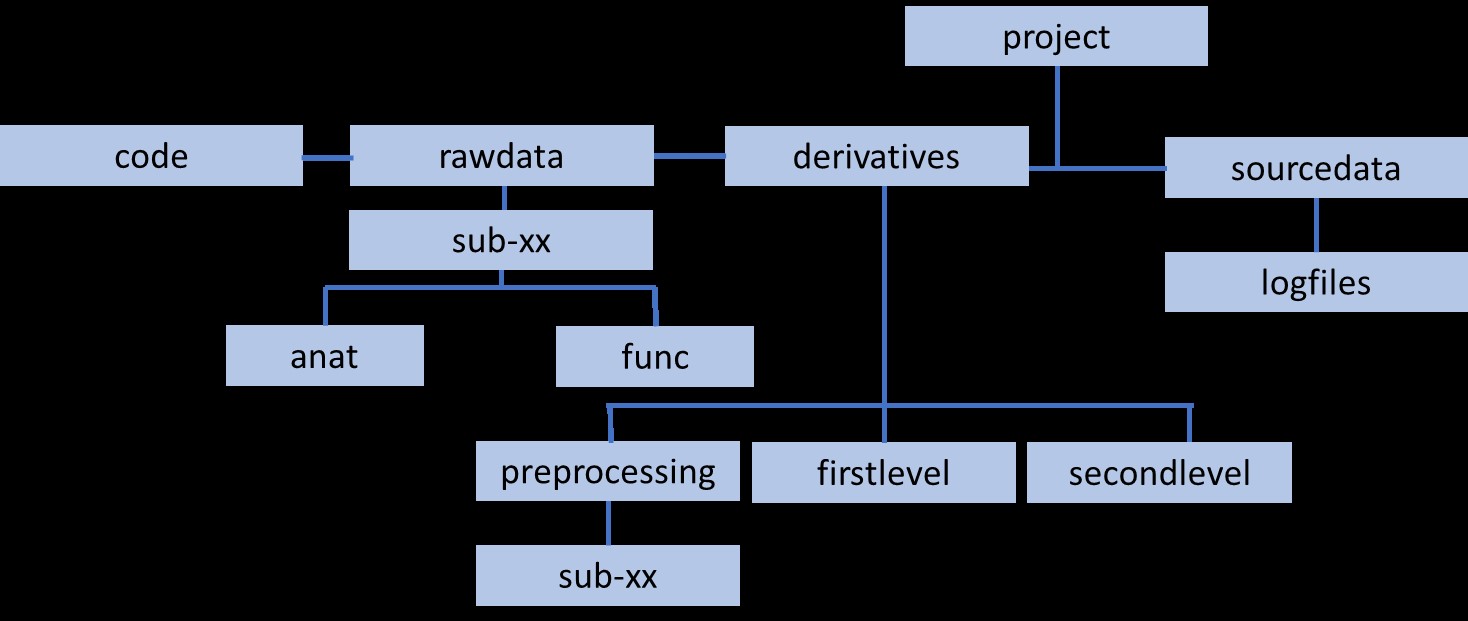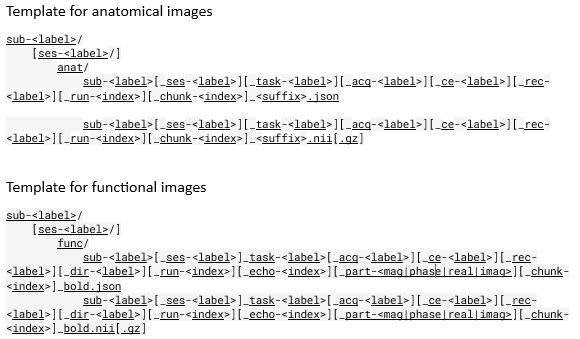BIDS at the LMN
BIDS describes how data from a Neuroimaging Experiment can be categorized and organized to define a uniform standard for saving and sharing these data. Therefore, BIDS uses already used file formats like Nifti, Json and Tsv (see the data format page for an explanation).
The structure of the folders and the uniform designation of the data is standardized (fig. 1). This fact enables the name to already convey information (key-values) about the data, making it easy for even an uninvolved user to use and understand it directly. Further data and subfolders without a clear definition in the BIDS specification can also be incorporated into the folder structure. By doing this you have to use the standard for the designation of the data and think about a reasonable place in the structure of the folder. It is also important that the data in BIDS were converted from 3D-data to 4D-nifti-data, which are 3-dimensional Data, that shift over time.
The structure follows the so-called „Inheritance principle “, which describes, that data from a higher directory level are handed over to a lower level. Therefore, the data get more detailed and the suffix from the name of the data defines the category of data. In this way the data can be found and processed efficiently. The Data from the scanner, which have not yet been converted in nifti-data, are stored in the folder „sourcedata“ as well as the logfiles, that are stored in a separate subfolder. Besides this, the folders „derivatives “, „code“ and „rawdata“ are created. „Rawdata“ contains two subfolders for every subject: one subfolder for the anatomical scans (anat) and one for the functional scans (func). These folders include the nifti-files and the json-files with informations about the scans like the repetition time or the slicetiming. „Derivatives“ comprises the processed and analysed data and for MRI the folder is seperated in the subfolders „preprocessing“, „firstlevel“ and „secondlevel“. In „codes“ all codes for processing and analysis of the data can be found (fig. 2). Moreover, it is important to mention, that the folders should contain a README-file for further explanations.
Creation of a BIDS compatible data-set¶
1) Conversion from DICOM to nifti data
2) Creation of the folder structure
3) Saving of the original date in the folder „sourcedata“
4) Renaming and Sorting of the nifti-files
5) Storage of the data in the right folder
6) BIDS Validator for the validation of the data sets
These steps can be done by hand or with a program like Matlab by using an appropriate code.
Filenames¶
Filenames consist of a chain of entities, that are separated by underscores, and a suffix, that shows the category of the data (modality). Within entity hyphens are used as shown in the templates. Therefore, the filenames are readable for humans and programs. If there is only one variation of an entity (e.g. only one session), this element can be omitted in the name. Important to say is, that functional MRI-images contain the suffix „bold“.

